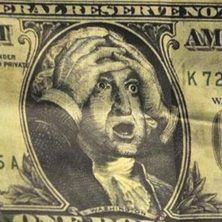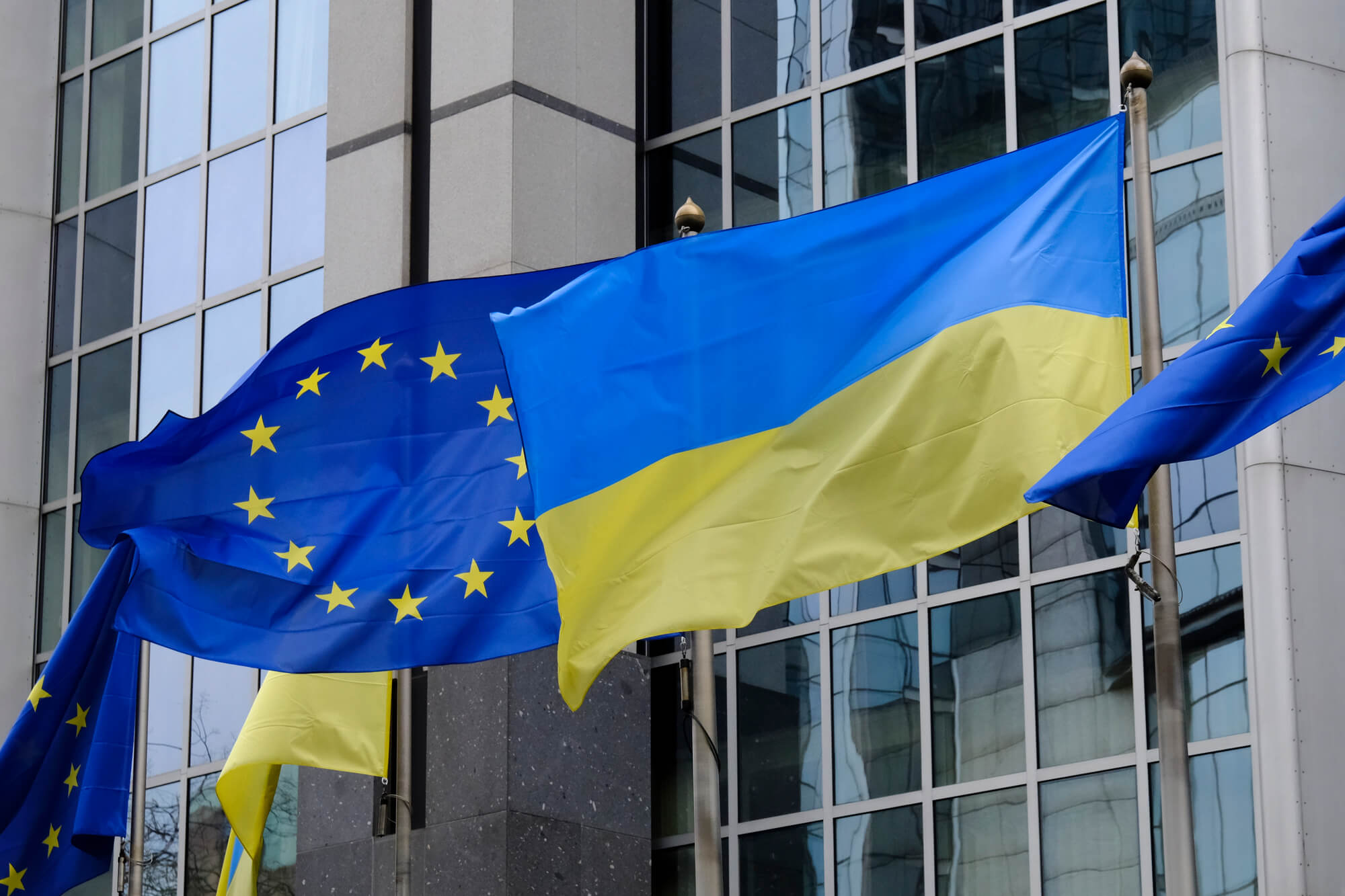Voices on the inevitability of the country’s default began to spread among Ukrainian and international experts. The coming days will show whether this pessimistic scenario will become reality or not. The only certain thing is that Ukraine is experiencing a severe budget and debt crisis, which is very similar to that of the mid-1990’s Russia. Therefore, important question is whether Ukrainian government will make conclusions from the “Russian experience”?
In late December, the Standard & Poor’s agency lowered its credit rating for Ukraine’s foreign currency bonds to “CCC-” from “CCC” with negative outlook. At the same time, voices on the inevitability of the country’s default began to spread among Ukrainian and international experts. In early January, the World Politics Journal published a piece that warned of Ukraine’s debt insolvency – the latter can be prevented by an additional package of assistance totaling 15 billion USD. According to this article, Russia may appeal to the terms of the December 2013 bond issuance, which entrenched the right of the bond holder to request debt repayment if the borrowing country’s debt to GDP ratio would exceed 60%. Last October, the Blazer foundation’s experts assessed that by the end of 2014 Ukraine’s debt to GDP ratio would reach the level of 68%. As a result, the Kremlin will have legal grounds to request the repayment of 3 billion USD, which the Russian Finance Ministry spent last year to buy the Ukrainian Eurobonds.
The coming days will show whether this pessimistic scenario will become reality or not. The only certain thing is that Ukraine is experiencing a severe budget and debt crisis, which is very similar to that of the mid-1990’s Russia. The latter began on October 11, 1994, when the Russian currency rate lowered from 2833 to 3926 rubles per dollar. The “Black Tuesday” devaluation was followed by the resignation of the heads of both the Finance Ministry and the Central Bank. The Russian government decided to stop using the Central Bank credits to finance the federal budget deficit, because it triggered hyperinflation in 1992 (2508.8%), 1993 (840.0%), and 1994 (214.8%). The “money printing machine” no longer worked. As a result, the inflation rate was cut drastically in 1995 (131.6%), 1996 (21.8%), and 1997 (11.0%). The price stabilization thrust into the spotlight the budgetary problems: the Treasury’s expenditures were no more depreciated, as it was during the first three years of market reforms. In 1995, a new law on the Central Bank was adopted – monetary financing of the fiscal deficit became illegal.
Since then the Russian government could use only bonds to cover the difference between its expenditures and revenues. The GKO (i.e. “government short-term commitments”) market was launched in the Spring of 1993. At the first time, it was accessible just for the Russian investors. But the government’s achievement of macroeconomic stability made this market attractive for foreign institutional investors, which got restricted (January 1996) and full (January 1998) rights to buy and sell Russia’s state bonds. This, in turn, lowered the GKO market interest rates (to the level of 20%) and gave the Treasury an opportunity to issue mid-term bonds (with a duration of 3 to 5 years). However, the fundamental problem of insufficient tax revenues remained. Therefore, the government had to borrow more and more to balance the budget. As a result, the share of interest payments within the federal expenditures rose from 19.3% in 1995 and 25.3% in 1996 to 23.8% in 1997% and more than 30.0% in the first half of 1998. From the other hand, the size of non-interest expenditures of the government decreased from 20% of GDP in 1993 and 1994 to 10% of GDP in 1998.
The 1997 Asian currency crisis triggered the Russian financial meltdown. After the devaluation of the Thai baht, Indonesian rupiah and Korean won foreign institutional investors began to pull funds from developing markets, including Russia. Therefore, in the period from late October to late December the Central Bank had to spend its reserves to support the GKO market. In January and February 1998 the Bank of Russia managed to take situation under control. But in March a new wave of destabilization occurred: the President Boris Yeltsin ousted Viktor Chernomyrdin, who had been the Prime Minister for more than five years and perceived abroad as a symbol of political stability. In April and May State Duma was discussing Sergey Kiriyenko as a candidate to the position of the head of government. When he finally got this post, he refused to sign the IMF Memorandum on Economic Policy, i.e. the basic document for the provision of credits from the Fund. As a result, in the mid of July the GKO market interest rates reached the psychologically important level of 100%. By that time, Russia had lost its financial credibility, and the Treasury failed to raise a cent during the auctions of 23rd and 30th July, as well as of 5th and 12th August.
An extraordinary assistance package from the IMF was the last hope of the Russian government to save the situation. In June, Anatoly Chubais was appointed to the position of a special presidential representative for liaison with international financial organizations. A month later, he reached an agreement with the IMF board on the provision of 22.7 billion USD. The concluded size of the first tranche amounted to 5.2 billion USD, which should have been disbursed under the condition of implementing measures to consolidate the budget. But in the mid of July the Duma refused to adopt the necessary legislation. As a result, the amount of the first tranche was cut to 4.8 billion USD, while the rest 17.9 billion USD were not provided at all. Therefore, by the early August the Russian government had become insolvent. The Cabinet of Ministers could either turn on the “money printing machine” to monetize the debt or default its obligations. The government choose the second option, and it was not a surprise considering the severe consequences of the 1992-1994 hyperinflation. On the morning of August 17, the Government and the Bank of Russia issued a joint statement, which announced the debt default as well as the refusal to support the currency. Those decisions were difficult, but, in fact, they had no alternative.
The default had a number of harsh consequences for both the economy and population. First of all, the exchange rate of the national currency fell from 6,40 rubles per dollar in the mid-August 1998 to 20,65 in the late December of that same year. This, in turn, cut the consumers’ purchase power and led to a sharp rise of inflation, which by the end of 1998 totaled 84.5%.
At the same time, six of the seven country’s biggest banks (“Menatep”, “SBS”, and “Inkom”, as well as “Onexim”, “Most”, and “Mosbusinessbank”) crashed. Andrey Kozlov, the then first deputy chairman of the Central Bank, initiated the transferring of deposits from these financial institutions to “Sberbank” and thus stopped the banking panic. In spite of all these painful events, the economy began to recover soon after the dramatic day of August 17. The Russian companies took the advantage of the low ruble exchange rate and expanded its market presence. The GDP decline that started in 1991 was finally overtaken. Then there was a start of a rapid economic growth, which lasted until the global financial crisis of 2008-2009. Thanks to this growth, the real income of population rose by 141.4%.
The main lesson of the 1998 crisis was that negative consequences of a soft budget policy cannot be compensated by the tight monetary policy. The last year of the Yeltsin’s presidency has become the first one in Russia’s post-communist history, when the federal budget was balanced. In the early 2000s, the memory of the financial crisis was fresh. For this reason, the government was pursuing conservative fiscal policy at that time. For example, in 2005 Russia’s non-oil and gas budget had a surplus of 1.1% of GDP. The key to macroeconomic stability was a radical tax reform: in 2000-2004 the government introduced a flat income tax of 13%, unified social insurance payments, and liquidated VAT exemptions and corporate income tax remissions, as well as abandoned a sales tax. These measures allowed to cut the tax burden – in 2001-2006 the latter was lowered each year by 1% of GDP. The tax system’s simplification resulted in the expansion of a taxable base, which, in turn, became the ground for the rise of budget revenues. Moreover, the reform gave thousands of entrepreneurs an opportunity to legalize their businesses. That is why it is possible to consider these tax changes as one of the most successful reforms that were implemented in Russia after the collapse of the USSR.
What implications can Ukraine draw from the Russian experience? First, a debt default is not the end of the world. The government’s refusal to pay its debts may trigger the currency devaluation, the banking system’s crash, and the hike of inflation rate. To mitigate negative consequences, the Cabinet of Ministers should restructure the debt payments, save the deposits of bankrupt banks and balance the budget. To achieve the latter goal, the government should cut the tax burden, simplify the tax administration system, and abandon various tax exemptions and remissions. The business community should be given a transitional period of six to twelve months to adopt to the tax changes. Finally, to reach macroeconomic stability the government should refuse to finance the fiscal deficit through monetary emission. The last but not least, to overcome the budget and debt crisis, all the parliamentary parties should cooperate constructively. Russia’s Duma of the late 1990s failed to do so. The communist majority blocked virtually all the government’s efforts to consolidate the budget, which, in turn, triggered the financial meltdown of August 17, 1998. Today, there is no communist fraction within the Rada. Will those parties that are represented in the Ukrainian parliament manage to avoid fiscal populism? That remains to be seen.
Attention
The author doesn`t work for, consult to, own shares in or receive funding from any company or organization that would benefit from this article, and have no relevant affiliations




